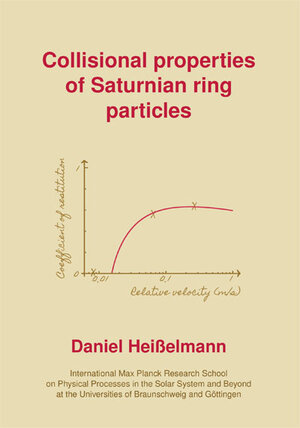
×
![Buchcover ISBN 9783944072142]()
Collisional properties of Saturnian ring particles
von Daniel HeißelmannSaturn’s rings are among the most impressive objects in our Solar System, spanning 960,000 km at a thickness down to only a few meters. To date, the rings have been extensively studied using ground- and space-based telescopes (e. g. the Very Large Telescope and the Hubble Space Telescope) as well as deep-space missions, like Voyager and Cassini. Hence, a wealth of data exists on the temporal evolution of numerous structures in the rings evolving on various timescales. In general, numerical simulations are used to explain the processes involved in the changes of their appearance or the computations are utilized to derive the properties oft he countless particles the rings are made of. However, up to now, the input parameters are not well constrained by experimental studies. In this thesis, a set of new experimental techniques was developed in order to better understand the collisional properties of water ice as the dominant material in Saturn’s rings. The presented experimental results give the fraction of kinetic energy dissipated in binary collisions between ring particles, which strongly influences the stability of Saturn’s rings and enhance our understanding of their limited thickness. Along with this, the first ever direct observation of sticking between macroscopic ice particles enables us to derive particle properties, like the specific surface energy and the viscous timescale, from a state-of-the-art contact model by Krijt et al. (2013).
Taking into account the results, the formation and disruption of ephemeral aggregates (DEBs) by collisions in Saturn’s rings can be considered as plausible mechanism of masking the rings‘ age, letting them appear younger than they are. Furthermore, the experiments enable us to draw conclusions about a hypothetical ring system of Saturn’s moon Iapetus as progenitor of ist enigmatic equatorial ridge and the existence of still undetected moons within the recently detected rings oft he centaur (10199) Chariklo.
Taking into account the results, the formation and disruption of ephemeral aggregates (DEBs) by collisions in Saturn’s rings can be considered as plausible mechanism of masking the rings‘ age, letting them appear younger than they are. Furthermore, the experiments enable us to draw conclusions about a hypothetical ring system of Saturn’s moon Iapetus as progenitor of ist enigmatic equatorial ridge and the existence of still undetected moons within the recently detected rings oft he centaur (10199) Chariklo.


